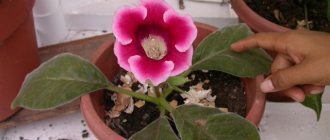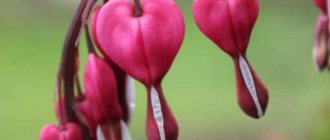Among the many plants, Pachistachis occupies a special place. This is an evergreen shrub, which belongs to the group of perennial crops.
The flower is distinguished by unusual buds , thanks to which any area will be radically transformed. What pachystachys looks like, photos of the main species, everyone can see in this article.
Description of pachistachis
Pachistachis has very beautiful olive leaves. The shape of the plates is slightly elongated .
Its upper part is smooth, shiny with pronounced veins. The plates grow up to 6 cm long. Important! When grown in the middle zone, flowering is practically uninterrupted.
The plant grows in the form of a bush, which, with proper care, reaches 2 m in height. Inflorescences in the shape of a tetrahedral spikelet. It can have a rich yellow, red, orange , white tint.
As it grows , so-called wings appear from its axils , thanks to which the plant becomes even more attractive. The flowering period is from 2 to 4 weeks.
Transplanting and rooting a plant
For transplantation, you need to carefully prepare. Pre-prepare the soil so that the plant takes root in a new place. There are special transplantation rules that will allow it to quickly grow and bloom.
Soil preparation
Bokarneya: home care and popular types
In ordinary soil, the flower may not take root. Therefore, first buy a universal mixture in the store, which is intended for ornamental plants. If you wish, you can prepare it yourself. To do this, mix equal parts:
- sand;
- humus;
- peat soil;
- leaf soil.
Important! To ensure immediate growth, it is recommended to add 2 times more putrid turf soil.
For replanting, the soil must be loose. This ensures the passage of oxygen and moisture to the lowest roots. Thanks to this, the root system will begin to increase in size, preventing the possibility of rotting.
Transfer
The procedure is carried out every year in any month of spring. It is better to do this when the flower has survived the pruning procedure. For replanting, the entire root system is dug up. The plant is placed in a new pot, into which a mixture of various types of soil has previously been added. In addition, the pot must be lined with a drainage layer in advance to prevent water stagnation.
Varieties and types
There are several types of plants in nature. They differ from each other in the shade of the inflorescences and the height of the shoots.
Species grown indoors:
Pachystachys lutea
Pachystachys lutea is the most common species. The bush grows up to 1 m tall. The shoots are all long and erect. Young specimens have thin and soft branches , but over time they change their shade and become woody.

The leaves are large, oval-shaped and grow up to 20 cm long . The surface is smooth with pronounced veins.
The inflorescences have a rich yellow tint. They are very reminiscent of the shape of a spikelet, which pleases with its appearance throughout the warm period.
Pachistachis yellow flowers have white flowers . They appear as the spikelet grows. These flowers are not only attractive, they give off a very delicate and rich aroma.
Red pachystachys (pachystachys coccinea)
The plant is distinguished by bracts of a dark olive tone, from which beautiful buds appear. When loosened, they acquire a rich red color. Pachistachis red grows up to 2 m tall.
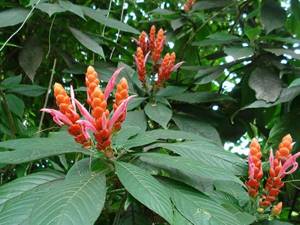
Description
A perennial plant reaching a height of 1.5 m, forming a spherical bush of thin woody stems. The leaves are oval in shape, elongated at the ends, 10-12 cm long, veiny, dark green.
At the end of March - beginning of April (and almost until October), at the ends of the shoots, tightly adjacent to the stem, yellow or orange candles from the bract scales appear from bottom to top. Then soft, about 10 cm long white, orange or pink flowers, in the form of elongated petals of two or four, depending on the species. After one or two weeks, the flowers fade, but the ear itself remains. During flowering, 15 or 20 flowers may appear on the bush.
Rules of care
Pachistachis is not demanding to care for, but you will still need to follow simple rules . Only then will the bush be bright, spreading and delight you with abundant flowering.
Location and lighting
These indicators play an important role in growing a flower. The flowerpot should be kept in a room where there is a lot of light, but no direct sunlight.
An excellent option are windows that face west or east . If this is not possible, then pachistachis can be grown on a southern windowsill, but it is important to shade the plant at lunchtime.

Watering and humidity
During the warm season, especially when the air temperature is high outside, it is recommended to irrigate the plant regularly. The soil should always be moist. Even when the soil dries out slightly, the leaves begin to droop. In winter, you should irrigate less frequently, but also by controlling the level of substrate moisture.
Important! Don't forget about spraying either. This should be done using a spray bottle. Use only settled water at room temperature.
To achieve the desired level of humidity, a tray with pebbles and water is also placed near the flowerpot.
This video talks about pachistachis and how to properly care for it at home.
Methods of propagation of Pachistachis
The tropical plant is propagated at home by cuttings. Flower growers successfully root parts of the shoots that remain after pruning. You will need shoots from 8 to 10 cm in length.
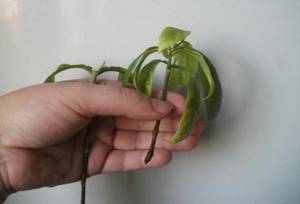
Cuttings can be rooted both in water and in loose soil, for example, in a sand-peat mixture. In the first case, they are placed in a glass of clean water, and covered on top with plastic film, making several holes in it for ventilation.
Rooting of cuttings in the soil occurs as follows: a small container is filled with a mixture of peat and sand, and the soil is moistened. The cut of the shoot is treated with a root formation stimulator. The cuttings are buried to a depth of 3 cm.
A greenhouse is installed on top. It can be made from a plastic bottle, cut in half. Care during rooting includes:
- airing the plant;
- removal of condensate from under the dome;
- soil moisture;
- protecting cuttings from midday sun.
Root shoots appear after 3–4 weeks. Now the cuttings can be transplanted into a pot. Fertilizers are introduced when young plants take root. It is recommended to plant several pieces in one flowerpot, then the bush will turn out lush.
The seed propagation method is rarely used - you have to wait a long time for flowering. Seeds are sown on loose, moist soil and covered with film. After the emergence of shoots, it is removed. Picking is carried out a month after sowing.
How to cut pachistachis
Cuttings are one of the simple and effective methods of propagation . You can separate planting material throughout the year.
Before rooting the cuttings, you should prepare a place in the mini-greenhouse. In this case, the air temperature should be about +200C. After roots appear on the cuttings, you can move them into the substrate.
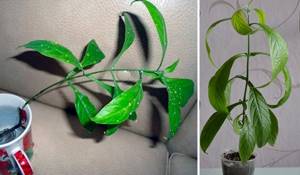
Pachistachis flowering
We recommend reading our other articles
- Strawberry variety Temptation
- Powdery mildew on currants
- How to spray tomatoes against late blight
- Summer pear varieties
The advantage of pachistachis is its flowering. But in order for the flower to bloom beautifully, it is necessary to ensure that all the necessary conditions are present for this.
- The temperature is maintained at the comfortable level specified above. In this case, the humidity should be high.
- During the period of flower stalk formation, the crop is fed, otherwise it may slow down in development and even completely shed the bract.
- Pruning is carried out not only so that the crop is beautiful, compact, and short, but also so that it blooms. Old shoots do not produce flowers. Bracts and flowers are present only on young stems.
- Pachystachys blooms only when there is an abundance of diffused light. If there is not enough light, it will grow green.
If all conditions for flowering of the plant are met, pachystachis will bloom from late winter to mid-autumn. In rare cases, flowering can last all year.
Planting Pachistachis
Young specimens must be planted in a substrate intended for ornamental and flowering crops. Place a good drainage layer of pebbles or expanded clay at the bottom of the container.
You can also prepare the soil yourself. This is done from peat, humus, sand, clay and leaf soil. All components should be taken in equal proportions .
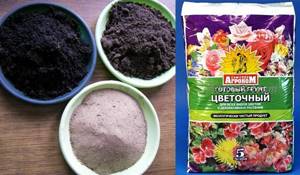
To accelerate growth during the growing season, it is recommended to feed the flower with special preparations.
Choosing a pot
For young plants, you should buy small containers. Large specimens are transplanted into spacious flowerpots. This way the root system will develop well .
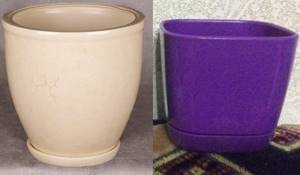
When carrying out the procedure, only the “transshipment” method should be used . The soil around the root system is not removed. The roots are cleaned only when there are visible reasons for this. These include the presence of root rot or waterlogged soil.
Advice! Containers for pachistachis need to be purchased so that their depth and diameter are the same.
Caring for pastachis at home
Rose Freesia (Friesia) - how to care for a varietal plant
Growing pachistachis requires compliance with certain rules. Errors in care often lead to the death of bushes.
Illumination and temperature conditions
The indoor pachistachis flower grows in bright light. Lack of light can lead to disease. However, if exposed to direct sunlight, the bush may die. Therefore, it is necessary to grow the plant indoors with sufficient light; in the summer, it is recommended to shade the plant. If necessary, special fluorescent lamps are used. When placing a bush on a windowsill, preference should be given to the western side of the house.
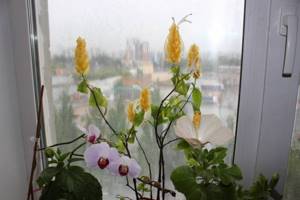
Proper placement of indoor plants
In summer, the air temperature in the room should be +17... +22 degrees, and in winter it should not fall below +15... +17 degrees. Such indicators are necessary for the plant to go into a dormant state.
Watering rules and humidity
When caring for Pachistachis yellow, timely watering is required. In summer, it is necessary to water the bush abundantly several times a day. However, you should avoid accumulating water in the pot. In winter, the frequency of watering must be reduced to 1 time every 5 days. In order for the plant to develop well, it is necessary to monitor air humidity. To do this, pachistachis is sprayed with water using a spray bottle.
Note! To prevent the roots of the bush from rotting, the pot must have holes to remove excess liquid.
Fertilizing and soil quality
The indoor flower requires regular feeding, and it is also picky about the type of soil. The soil should be light and well breathable. When preparing the soil yourself, you need to mix humus, peat and deciduous soil in equal proportions. It is also necessary to add sand to the prepared soil.
As a top dressing, you should use a special complex type of fertilizer for flowering crops. It is necessary to add nutrients after abundant watering once every 2-3 months.
Flower container size
The size of the container for the plant depends on the age of the crop. Young bushes are grown in medium-sized pots. When the bush grows, it needs to be replanted. The roots of the bush should not touch the walls of the pot.

Choosing the right pot for planting a crop
Important! To obtain a lush bush, several cuttings can be planted in one pot at once. After rooting, their ends must be pinched.
Pruning and replanting
To get a healthy flower, it is important to know how to properly care for pastachis. One of the important criteria for care is replanting and timely pruning of shoots.
To ensure that the crown is lush and the plant is less susceptible to diseases, pruning is carried out. The shoots of the crop at the age of 1 year are pruned so that a stump no more than 15-20 cm long remains above the soil. After the leaves appear from the buds, 3 of them must be removed. In the spring, before flowering, you need to pinch the tops of the shoots. Such procedures are carried out annually.

Pruning a pachistachis bush
The trimmed bush needs to be transplanted into a new soil mixture. To do this, the bush is thoroughly watered and carefully removed from the pot.
Important! During the transplantation process, it is necessary to use drainage from small pebbles. A layer of it is placed at the bottom of the pot and covered with soil on top.
Possible problems during care
Pachystachys diseases
This plant gets sick very rarely. But some problems may arise. Many people do not know why pachistachis leaves curl .

In fact, this occurs when care rules are not followed . To restore their former beauty, you will need to increase watering and move the flowerpot to a drier place.
Important! Pachistachis can shed its leaves. If this happens in late autumn, then everything is fine. In this way, the flower prepares for winter. In this case, you will need to trim all the shoots, leaving 10 to 12 cm.
At high air temperatures, the tips of leaf blades often dry out . This is very dangerous, as the heat can lead to the death of the bush.
Diseases and pests
Pachistachis is an unpretentious and fairly hardy plant, but sometimes it is still affected by some health problems:
- the lower leaves of pachistachis wither - the flower does not have enough moisture, it is necessary to adjust the watering regime;
- the lower leaves of pachistachis fall off - this is a common stage of development and aging of the plant; falling leaves can only be combated by regular anti-aging pruning of the bush. Pachistachis can also abruptly shed its leaves when exposed to cold or draft;
- pachystachys does not bloom - flowers bloom only on young shoots; in order for the plant to enjoy lush flowering again, it must be rejuvenated by pruning and pinching. In addition, the plant may not have enough sun, in which case it is moved to a brighter place;
- pachystachys flowers rot and fall off - a rather rare phenomenon that occurs due to improper watering and drafts;
- pale leaves of pachystachys are a sign of lack of light and moisture. Good lighting and regular watering will help restore the crown’s rich color;
- the tips of the leaves dry out and turn yellow - the room where the pachistachis is located has dry air and is too hot. Frequently spraying the plant with soft water can solve the problem.
Flower growers may also encounter unnatural stretching of the plant's shoots, shredding of its leaves and flowers - this is evidence of insufficient lighting; to correct the situation, the pachistachis must be moved to a sunnier place. And if the plant has slowed down in growth or stopped developing altogether - the food reserves in the soil have been depleted, this means that pachistachis needs urgent feeding.
Flowers planted in heavy soil or exposed to too much watering often get sick. A plant that has already suffered from improper care can only be saved by transplanting it into a new loose substrate and strictly observing the watering regime.
Among the pests that show interest in pachistachis, the following insects pose the greatest danger to the plant:
- spider mite;
- mealybug;
- scale insects and whiteflies;
- thrips.


